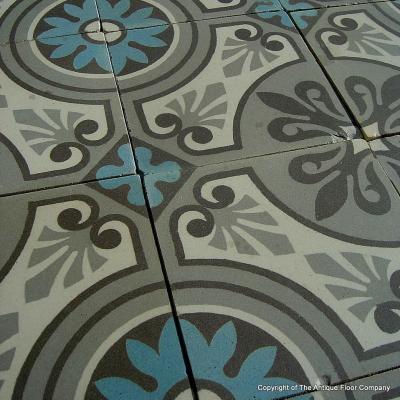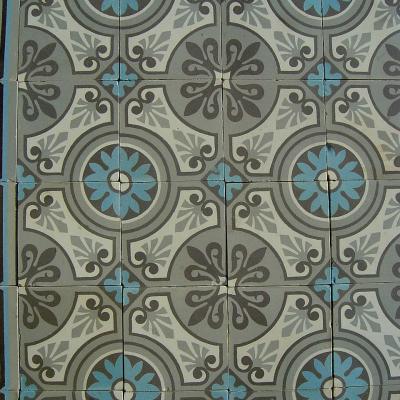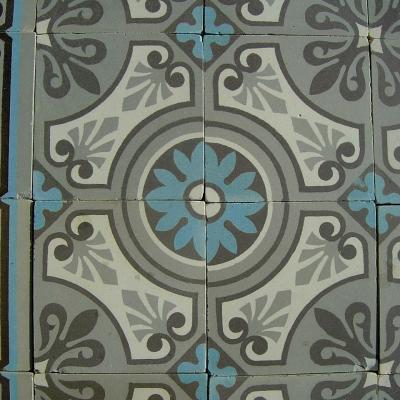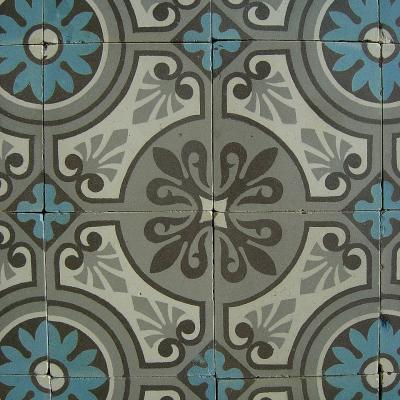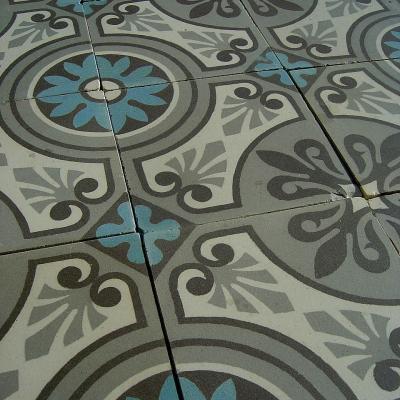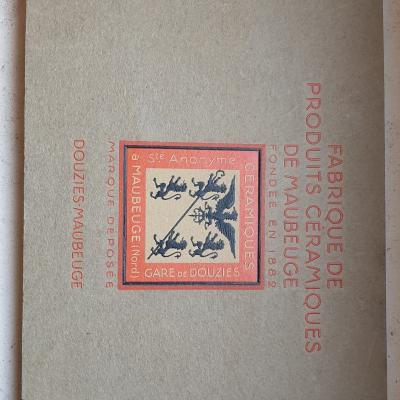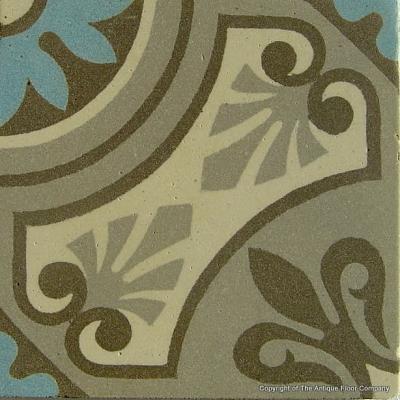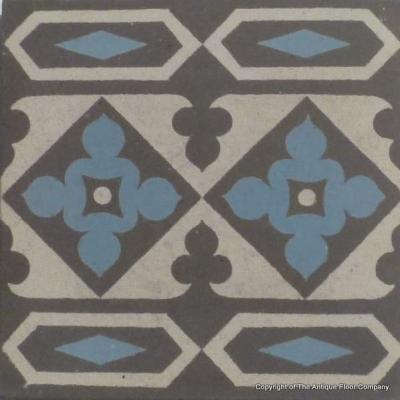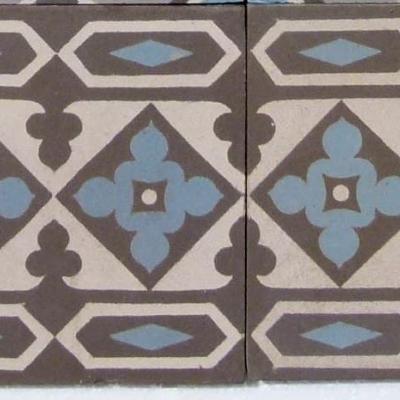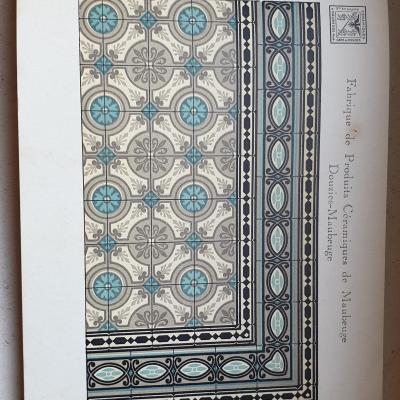A 5m2 / 54 sq ft. antique French ceramic in a cool palette - early 20th century
Reclaimed from a house built in 1905 in the small town of Berlaimont, in the Nord departement of France, this fully restored and ready-to-re-lay ceramic totals 5m2 / 54 sq ft. in surface area.
A ceramic-encaustic floor, it consists of a 15cm / 5.9 inch square field tile and a same-sized border tile, both of which are +/- 15mm / 0.6 inches thick. In a cool palette of primrose blue, mid-grey with charcoal piping on a white slip, the floor dates from the early twentieth century and was produced by Produits Ceramiques de Maubeuge, Douzies Maubeuge. For provenance, we have included in the gallery scans from their original catalogue showing both the field and the border tile.
Classical in its tessellation and easy on the eye, the design is both simple and pure and the symmetrical same-sized Maubeuge border adds further structure in framing the floor beautifully.
The floor has been completely cleaned of its old chaux mortar and years of wax, revealing a quality ceramic and colours that are as crisp and consistent as when they were first fired. There are occasional small groutable chips and nibbles present on a few tiles, but the condition of the floor is excellent and, being a highly fired tile, they can be laid inside or outside the home as they are impervious to high summer and sub-zero winter temperatures. Inside the home they can be laid with underfloor heating systems as they are excellent retainers of heat.
From a maintenance perspective, the tiles do not need sealing or waxing once laid, waxing being an option exclusively for aesthetic reasons, as a regular wash is all that is needed to retain their beauty and lustre.
Tile quantities
FIELD tiles - 176 - 4m2 / 43 sq ft
LARGE BORDER tiles - 44 - 1m2 / 10.7 sq ft. or 6.7 linear metres / 21.6 linear feet.
We have reclaimed this ceramic tile twice in the past 15 years, and we were delighted to receive photographs from our client showing the tiles installed in the family kitchen, a link to which can be found here
NOTE Antique tiles were most commonly made in single or two tile moulds. Before current computer automation methods their moulds were made by hand and the colour slips mixed by eye. Kiln temperatures could also be variable, as could the firing time. The result is that tiles often display subtle size and thickness variations and there can be tonal variations in colours, owing to the slip mixing and/or firing time. All of this makes these handmade tiles unique and adds to their charm. Some floors display their subtle variations in size and tones, some not, but when photographing we always take a random section of the floor so that it is representative of the whole. A tiler should always dry lay a section of the tiles to familiarise himself with them before starting to fix lay.
MAD53 MAD98 (18)



